By Christina Helmick
Did you know that preparing your child for school starts before they even enter the classroom? School readiness is an essential part of the development of a child before, after, and during their years in school. A child’s success is a parent’s success, and there are many free resources to support the school readiness journey! Here are two free resources for you to check out:
 Vroom is a free, bilingual tool that utilizes daily brain building activities that can be incorporated into a family’s daily routine. Activities are based on the child’s age and focus on parent-child engagement. Vroom, an initiative of the Bezos Family Foundation, was developed by a group of dedicated scientists, community leaders and trusted brands with input from community organizations and families like yours. Vroom is providing parents and caregivers with activities to boost early learning.
Vroom is a free, bilingual tool that utilizes daily brain building activities that can be incorporated into a family’s daily routine. Activities are based on the child’s age and focus on parent-child engagement. Vroom, an initiative of the Bezos Family Foundation, was developed by a group of dedicated scientists, community leaders and trusted brands with input from community organizations and families like yours. Vroom is providing parents and caregivers with activities to boost early learning.
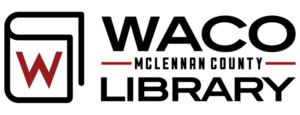 Literacy Kits are another great resource for both parents and children. Waco ISD early childhood experts worked with the library’s staff to make sure the items included are items that will help a child become school ready. These kits can be checked out for up to 21 days. The Literacy Kits are funded by Waco Rotary Club and are available at all Waco-McLennan County libraries.
Literacy Kits are another great resource for both parents and children. Waco ISD early childhood experts worked with the library’s staff to make sure the items included are items that will help a child become school ready. These kits can be checked out for up to 21 days. The Literacy Kits are funded by Waco Rotary Club and are available at all Waco-McLennan County libraries.
The School Readiness Working Group includes more than 20 organizations across the community that are committed to improving school readiness outcomes. This Working Group meets each month to talk about aligning activities and reviews best practices to bring into the Waco community to make sure all students entering school are prepared for success. If you’d like to join this group, send an email to Jillian ([email protected]) today!
The Working Group looks at data each meeting to make sure the strategies the group implements are addressing the outcomes the community agreed upon. In the 2016-2017 school year, 60% of students entering Kindergarten in Waco ISD were ready to learn, compared to 59% across the state. Even more impressive is that in Waco ISD if the kindergartners attended a Texas Public ISD, they were 11% more prepared for school than the state average.
Beyond promoting free resources like Vroom and the Literacy Kits, early childhood leaders in our community have developed a list of 10 important activities to do with your child to encourage school readiness! Here they are:
- Read to your child every day
- Have purposeful conversation
- Play, Talk, Read!
- Explore through movement and play
- Count, Group, Compare
- Create a routine, such as bedtime or bath time
- Take turns and share
- Make and give choices
- Limit access to technology
- Create opportunities to be helpful, such as allowing your child to help wash dishes
Whether you’re a parent, aunt, uncle, grandmother, grandfather, cousin, caregiver, school teacher or a community member dedicated to making sure generations to come are successful in school, it is important to get involved and share activities about school readiness!
Want to learn more about Vroom or the library’s literacy kits? Check out “The Work” page on the Prosper Waco website. If you’d like to engage with other parents and community leaders committed to making sure each child is prepared to enter school, join the School Readiness Working Group by sending an email to Jillian ([email protected]).
 Christina is a graduate of Baylor University with a BA in Journalism, Public Relations & New Media and is currently pursuing a Masters of Business Administration through Tarleton State. She is originally from Washington, D.C., but is proud to call Waco her home. Christina sits on the Board of Directors for Waco Habitat for Humanity and serves as a community advisor for Junior League of Waco. She enjoys spending time with her family and watching Baylor football. Sic ’em Bears!
Christina is a graduate of Baylor University with a BA in Journalism, Public Relations & New Media and is currently pursuing a Masters of Business Administration through Tarleton State. She is originally from Washington, D.C., but is proud to call Waco her home. Christina sits on the Board of Directors for Waco Habitat for Humanity and serves as a community advisor for Junior League of Waco. She enjoys spending time with her family and watching Baylor football. Sic ’em Bears!
The Act Locally Waco blog publishes posts with a connection to these aspirations for Waco. If you are interested in writing for the Act Locally Waco Blog, please email [email protected] for more information.
By Rachel E. Pate
Located on the Quinn Campus in the heart of east Waco, Esther’s Closet promotes empowerment, education and provides a much-needed resource to the women of the city. Launched on March 29, 2016, Esther’s Closet is a self-sufficiency program that assists unemployed women in preparing for interviews and entering the workforce by providing no-cost, professional clothing. Esther’s Closet clients are suited with a complete head-to-toe professional look for job interviews and 7 to 10 days of outfits for new employment. Clients who maintain steady employment are eligible to receive two additional outfits quarterly. Workwear options include business professional attire, medical scrubs and restaurant/retail clothing. In addition to providing employment wear, the program also offers resume writing and job performance skills to help women. To date, the program has assisted 334 women and provided 1,069 outfits.
As the Esther’s Closet Coordinator, I have a great deal of interaction with our clients. Our program’s numbers are a testament to our impact in the community, however they do not reveal the many faces and testimonies of these wonderful women. Some are single, proud moms, sole providers, just starting out, ready to start over, coming back, building up, etc. I’ve shared in countless tearful moments with clients on my office sofa discussing the obstacles we have overcome and those we still face. I’ve calmed the nervousness in the dressing room while helping someone prepare for a job interview in less than 30 minutes. I even taught a client how to properly apply her makeup for the first time by doing a side-by-side tutorial in the mirror. Being able to give my sincerest service and watching others’ confidence bloom before my eyes is a blessing to behold.
My passion is helping every client uncover her business fierceness; the ability to see herself be anything and do anything. When clients visit our office for the first time, they’re never quite sure what to expect. When they’re greeted by our professional staff, given a tour and shown to our boutique, their anxiety seems to subside a bit and is replaced with awe and excitement.
Our racks are filled with fashionable finds that make the suiting experience an easy one to get into. I often take the time to act as a personal shopper; finding the right sizes, shades and shapes to flatter clients’ frames. From baubles and belts to skirts and scrubs, Esther’s Closet has everything to send our clients out of our doors feeling empowered to take on the work world. One client felt so great about her new outfit, she wore it out of our office to her interview and forgot her own clothes in our dressing room for a few days!
I often speak from my heart and share my own testimony with my clients. I can relate to what it’s like to search for a new opportunity in life, only to be met with socioeconomic setbacks and hardships. As a new mom, some time ago, I found myself walking through the doors of my first post-partum interview, and I had no idea how ill-prepared I was with my outfit. I wore a comfortable blouse with dark denim slacks and my lucky, leather Chuck Taylor’s… Most employers might’ve interviewed me and never called back, but fortunately this interviewer pointed out that I wasn’t very professionally dressed. That moment changed my perception. That sincere observation and audacious statement helped me realize the invaluable importance of dressing for a successful first business impression. I decided then that if the company ever called me back, I would most assuredly show them just how professional I could be. A little over a month I received a call back, and I seized my opportunity. That same interviewer was highly impressed with my charm, knowledge and experience. This was all while I was wearing a tailored black suit with pumps and carrying a briefcase. I’d discovered my own business fierce, and I landed the job.
There’s just something about helping one another that appeals to the very best parts of our nature. It gives you an outlet for love and an inlet for hope. Every day I walk through the doors of Esther’s Closet, I’m granted with yet another opportunity to see how empowering someone else makes me and the nature and soul of our community much more hopeful- one outfit at a time.
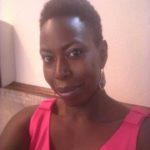 Rachel E. Pate is a native Wacoan and University High School alum. She currently works as the Public Relations person for the Cen-Tex African American Chamber of Commerce and serves as Coordinator for the Esther’s Closet program for women. She’s also a proud mom of one, lifelong member of Toliver Chapel (TCMBC) Church, graduate of the LeadershipPlenty Institute, lover of the great outdoors, an avid basketball fan and a dedicated wearer of Converse’s Chuck Taylor shoes.
Rachel E. Pate is a native Wacoan and University High School alum. She currently works as the Public Relations person for the Cen-Tex African American Chamber of Commerce and serves as Coordinator for the Esther’s Closet program for women. She’s also a proud mom of one, lifelong member of Toliver Chapel (TCMBC) Church, graduate of the LeadershipPlenty Institute, lover of the great outdoors, an avid basketball fan and a dedicated wearer of Converse’s Chuck Taylor shoes.
The Act Locally Waco blog publishes posts with a connection to these aspirations for Waco. If you are interested in writing for the Act Locally Waco Blog, please email [email protected] for more information.
By Allison Abel

New construction at Legacy Square
I work at a local, non-profit organization called NeighborWorks Waco. Our primary mission is to build stronger neighborhoods. Developing affordable homes in neighborhoods that are good candidates for revitalization is one of our main programs. Our newest project is a small subdivision located on Hood and Turner streets in East Waco, across from East Waco Park. Four homes have already been built and are already occupied by wonderful homeowners. Four additional homes are currently under construction, and another four homes are planned for future development. We named this new subdivision, “Legacy Square.”
When we chose the name “Legacy Square,” we had no idea what a powerful legacy this little piece of land already represented. We chose the name “Legacy Square” for the legacy our clients wish to leave to their children. With the help of a little research, however, the name “Legacy Square” has taken on an additional rich level of meaning for us.
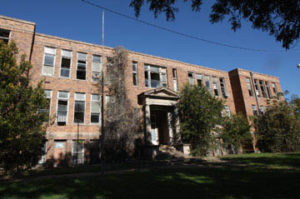
old R.L. Smith School building before it was torn down
Before Legacy Square was filled with smiling families and welcoming front porches… before the bricks, beams, and nails of construction… before the land was cleared, and even before the idea of a new housing addition was developed – it was the location of a dilapidated building: The R.L. Smith School. Some of our readers may remember this school. Some may have even personally attended R.L. Smith. This building, erected in 1913, went by different names and served the community in a variety of capacities over the last century.
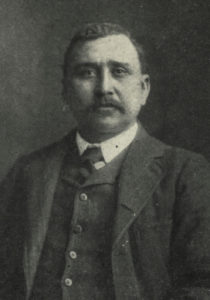
Robert Lloyd Smith
Our focus, though, is not on the school itself, but on its namesake – R.L. Smith. Unless you are a historian, you may not have heard this name. Once you hear a little more about this amazing man’s legacy, you’ll understand why we are so excited to share in this bit of history.
Robert Lloyd Smith was born in 1861 a free black man in Charleston, South Carolina. He was well-educated. He attended the public schools available in Charleston. Then he attended the University of South Carolina, planning to major in mathematics. However, during his time at USC, legislature closed the university to African-Americans. Smith transferred to Atlanta University, acquired a bachelor’s degree, and began a career of teaching.
Eventually, R. L. Smith left South Carolina for Oakland, Texas, a small cotton farming community about halfway between Houston and San Antonio. Smith quickly realized that a sizable African-American population lived in Oakland. He also discovered that only a small portion of this population owned their own homes and all were living with very few municipal services available to them.

Group photo of the Farmers Improvement Society
After identifying this social issue, he went to work, seeking solutions for the African-Americans living in Texas. Eventually, he discovered an article entitled “Youth’s Companion.” The author presented a case study of how a self-improvement society in New England changed the lives of its participants. Smith thought to himself “how much more necessary [a self-improvement society] was for a people who had just come out of the house of bondage.” That same year, he established the Farmers Improvement Society.
Hopefully, we haven’t lost you in this story yet because you have just made it to the best part – the incredible change that ensued following the creation of Smith’s society. The Village Improvement Society began first with a goal of beautifying their homes and neighborhoods. In short, Smith singlehandedly created a group that would transform the “black side” of Oakland.
Roofs? Repaired.
Houses? Repainted.
Landscaping? Planted.
Fences? Rebuilt.

Farmer’s Improvement Bank on Bridge Street (Current location of the Waco Convention Center)
More than community beautification, though, Smith also established a school, a bank, and other services specifically for the African-American population. The Farmers’ Improvement Bank was right here in Waco – on Bridge Street, where the Convention Center now stands.
Smith strongly believed in and encouraged the philosophy of economic self-sufficiency, especially in the African-American community. He believed the greatest traits achievable were thrift, industry, and economy.
R.L. Smith’s legacy touched many people around the country. At its high point in 1911, the Farmers’ Improvement Society claimed 12,000 members in 800 branches across Texas, Oklahoma, and Arkansas. Although we only recently discovered the story of R.L. Smith, after we had already named Legacy Square, we are proud to carry on the legacy of this great and influential man.
Today, Smith’s legacy – one of growth and development – continues to flourish! NeighborWorks Waco strives toward many of the same principles R.L. Smith encouraged over 100 years ago – economic self-sufficiency, neighborhood beautification, and the growth of East Waco. Our hope is that through the development and construction of Legacy Square, the rehabilitation of houses in the area, and the spurring of economic development, NeighborWorks Waco is living into the legacy of Robert Lloyd Smith.
 This Act Locally Waco blog post was written by Allison Abel. Allison is the Homeownership Center Manager at NeighborWorks Waco. She received her Bachelor’s degree in Child and Family Studies from Baylor University and is currently working on a Master’s in Public Administration. A Waco native, Allison enjoys life by connecting with family and friends, reading any novel she can find, and enjoying downtown Waco with her pup, Ollie.
This Act Locally Waco blog post was written by Allison Abel. Allison is the Homeownership Center Manager at NeighborWorks Waco. She received her Bachelor’s degree in Child and Family Studies from Baylor University and is currently working on a Master’s in Public Administration. A Waco native, Allison enjoys life by connecting with family and friends, reading any novel she can find, and enjoying downtown Waco with her pup, Ollie.
NeighborWorks Waco is not for profit organization focused on building stronger neighborhoods through homeownership, quality rental housing and community-building initiatives. NeighborWorks Waco’s vision is that through NeighborWorks Waco and its collaborations, the Central Texas area is filled with vibrant, thriving communities. Online: nw-waco.org
(This piece was first published on the Baylor School of Education blog “Instant Impact.” – ALW)
by Taylor Ward
Results from the first three years of the Baylor School of Education’s EnAbled for College program show that high-school students working with trained mentors are reaching the next level of education.
Research has proven that at-risk and disabled high school students are less likely to pursue a post-secondary education. And without that education, many continue to live below the poverty line.
The Baylor School of Education’s Department of Educational Psychology is working to change that with a grant from the AT&T Foundation. Through the EnAbled for College mentorship program, now in its fourth year, Baylor graduate students mentor high-school students in the greater Waco community.
EnAbled for College serves about 50 high schoolers each year, and 100 percent of the program participants who graduated in May 2017 applied to a post-secondary educational institution. Of those seniors who applied, 97 percent were accepted to college.
The project began in 2014, modeled after the AT&T Foundation Building a Grad Nation campaign. In its first three years, the EnAbled for College program served:
- 151 students in McLennan County in Central Texas
- 48 percent of those students had a disability,
- 71 percent were from low socioeconomic homes, and
- 74 percent were first generation students.
Baylor’s Dr. Tamara Hodges spearheads the project as a co-principal investigator for the AT&T grant. She is a senior lecturer in the Department of Educational Psychology, a licensed psychologist and a Licensed Specialist in School Psychology.
“These kids couldn’t see past high school,” Hodges said. “I think the crux and the heart of this program is watching people’s lives change — knowing the significant obstacles facing some of these kids and now knowing that they are in college? That’s success.”
During the program’s first three years, mentors were spread across six different high school campuses. For the 2017-2018 school year, the EnAbled for College program is focused on two local high schools in McGregor ISD and Waco ISD.
The program seeks to serve:
- Low-Income Students
- Minority Students
- Students with Disabilities
- English Language Learners
- Low-Graduation-Rate High Schools
Dr. Terrill Saxon, Interim Dean for the School of Education, is co-principal investigator and has worked with EnAbled for College since its inception.
“These kids are viewed by their teachers, principals and counselors as having great academic potential, but they need additional resources in order to make their post-secondary dreams a reality,” Saxon said. “It has been a wonderful experience seeing it grow into a project that directly benefits local high-school students.”
Mentors are the heart of the program because of the relationships they build with their students. Each mentor works with 10 to 20 students, and they meet with them in one-on-one sessions as well as in group settings at least once a week. They discuss everything from how to fill out a college application to how to deal with the Free Application for Federal Student Aid (FAFSA).
“Like many of the students I mentor, I didn’t have the available resources to guide me toward pursuing post-secondary education,” said student mentor Crystal Posada, a master’s student in Educational Psychology. “As a first-generation student, I was clueless about college and everything it had to offer. I am excited to be that someone for these students and help them see a future past their high school graduation.”
The mentors benefit from the EnAbled for College program as well. Through the AT&T grant program, 22 graduate students in the Department of Educational Psychology have worked as mentors.
“Mentoring has highlighted the challenges that many of my students face, but it has also shown me just how capable, motivated and deserving they are,” said mentor Jacy Latta, a graduate student pursuing an Educational Specialist degree in School Psychology. “Walking alongside them as they prepare for their future has changed my life, and hopefully it’s empowering them to be seekers of positive change for themselves and for their communities.”
And Dr. Hodges is determined to see the success of the program.
“The way out of poverty is through education,” she said.
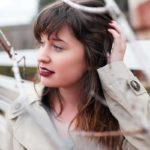 Taylor Ward is a senior journalism, public relations major at Baylor University. Taylor is a United States Air Force military brat and has lived in six different places while growing up until her father retired to Cibolo, TX where she graduated high school.
Taylor Ward is a senior journalism, public relations major at Baylor University. Taylor is a United States Air Force military brat and has lived in six different places while growing up until her father retired to Cibolo, TX where she graduated high school.
By Lauren Paczynski
Are you looking to redecorate, or just prowling for that perfect statement piece for your home? Are traditional furniture stores not really your style? Then this post is for you— the shabby-chic shoppers, the junk junkies, and the antique aficionados. Whether you’re looking for vintage finds, antique treasures, or “junque,” there are tons of local shops for you to explore. In this blog post, I’ll be giving you a rundown of five of them— all located along LaSalle Avenue.
Shades of Shabby — Refurbished Home Goods and Farmhouse Chic
Shades of Shabby is a cute and cozy little furniture store that specializes in refurbished and found furniture. Before you head inside, take a peek at the side of the building— there’s an adorable little mural there reading “Dear Waco, we love you!” (A perfect spot to snap a quick selfie!)
When you first walk in the door, you will be greeted by the scent of gently glowing magnolia candles and the sight of cotton bouquets and old, distressed wood. Among the items available when I last visited were vintage-style floral dishware, woodsy-industrial light fixtures, and made-to-order farmhouse style tables. Many of the pieces here are, as I said, refurbished— old wood has been painted or white-washed and gently distressed, giving it that much loved “shabby-chic” look. If that’s your thing, definitely pay them a visit! Shades of Shabby has a wonderful selection of beautifully crafted pieces. If, however, you prefer that old wood before it’s been repainted— read on!
Hours: 10am-5pm Tuesday through Saturday
Junque in the Trunk — Rustic and Quirky
Next on our list is Junque in the Trunk— while they carry some similar pieces to Shades of Shabby, there’s a bit more in the way of rustic and quirky furniture here. You’ll still find some great repainted pieces here (great for those of you who love that vintage style but prefer a cleaner look), but there are also plenty of mostly-intact found pieces, as well as decorations and furniture with a more industrial flair.
Among my favorite finds when I visited were light fixtures crafted from old brass pipes, a pair of vintage roller skates, and a variety of old typewriters. You’ll find no shortage of conversation starters and statement pieces here! Aside from decorative items, the shop also offers made-to-order farm tables, as well as miscellaneous items like hand-crafted soaps and candles and raw local honey.
Hours: 10am-5pm Thursday through Saturday, 12-5pm Sunday
Riverside Relics — Retro, Vintage, and Collectibles
Riverside Relics is a treasure trove of retro and collectible items— walking a winding path through shelves and tables full of knick-knacks and vintage goods, I discovered stacks of old magazines, vinyl, and baseball cards. Aside from the collectables, I also spotted a retro TV (probably from the late 50s or 60s) in good condition, an old 8-track player, and an assortment of cash registers.
The shop also carries a variety of furniture items, and there’s a whole yard out back full of old bird cages and salvaged wood. I’ll also say that, although the staff at every shop I visited were perfectly helpful and friendly, the staff at Riverside Relics were probably the warmest and most interested in having a conversation. So, if you’re looking for somewhere where you can have both a great shopping experience and an engaging conversation, I recommend paying Riverside Relics a visit!
Hours: 10am-5pm Thursday through Saturday, 1-5pm Sunday
Junky Monkey — Clothes, Knick-Knacks, and DIY Supplies
When you first walk in the door, Junky Monkey seems like less of a furniture shop and more of a place to snag some smaller decorative items or unique clothing pieces. Which is well and good, but don’t let that fool you. Make sure to go up the stairs through the door at the back— there’s a whole other section of the shop back there, full of old appliances waiting to be gutted and reused, fantastic found furniture and decorative items.
Now for my favorite part— past that second area, back out in the open air, is a yard crammed full of DIY supplies. Countless old doors, ladders, windows, scraps of salvaged wood and metal, and much more. There are tons of places to look for vintage and shabby furniture, but if what you’re really looking for is the materials to craft your own, this is where you want to be.
Hours: 10am-5pm Monday-Saturday
LaSalle Shoppes — True Antique Market
Last but most certainly not least is LaSalle Shoppes. What might at first look like a row of separate stores, this pink building is actually home to one gigantic antique shop, stocked by over 70 individual vendors. As someone who absolutely loves wandering the halls of antique malls and sorting through vintage salt-shakers, old velvet armchairs, and iridescent glassware, this was my personal favorite of the shops I visited.
This is the only shop on the list that I would title a “true antique market.” While most of the LaSalle vintage shops are more like small boutiques (tending towards that shabby-chic, Magnolia-style aesthetic) LaSalle shops has the quirky, warm, slightly dusty atmosphere I’ve come to expect when I think of antique stores. Among the treasures I uncovered here were two very old carousel horses, baskets full of stray baby doll limbs, vintage clothing and furs, a case full of costume jewelry, and a plethora of toys and collectibles. They also had the largest selection of vinyl of any of the shops I visited.
If, like me, you’re more interested in shuffling through shelves of oddities than hunting for specific furniture items, this is definitely where I’d start. And make sure to set a little time aside— there’s a lot to look at!
Hours: 10am-6pm Tuesday-Friday, 10am-5pm Saturday & Sunday
 This Act Locally Waco Blog post was written by Lauren Paczynski. Lauren is a Senior at Baylor University, studying Professional Writing. A Virginia native, she moved to Texas in 2014 to attend Baylor and intends to stay here (at least for a while). After graduation, she hopes to work in editing & publishing. The Act Locally Waco blog publishes posts with a connection to these aspirations for Waco. If you are interested in writing for the Act Locally Waco Blog, please email [email protected] for more information.
This Act Locally Waco Blog post was written by Lauren Paczynski. Lauren is a Senior at Baylor University, studying Professional Writing. A Virginia native, she moved to Texas in 2014 to attend Baylor and intends to stay here (at least for a while). After graduation, she hopes to work in editing & publishing. The Act Locally Waco blog publishes posts with a connection to these aspirations for Waco. If you are interested in writing for the Act Locally Waco Blog, please email [email protected] for more information.
Read Locally Waco is a project to promote literacy in Waco. Throughout the semester we will post stories that use sight words our children are learning in Waco ISD. You can print these stories and lists of words to use with your children or with other children in your life. This week’s story uses words from the First Grade Sight Word List. For a printable version of this story and word list, click here: The Bad Friends.
The Bad Friends
All of my friends came over to play.
We made a big mess. Then they all ran away.
My mom saw the mess, and it made her laugh.
“If one person would help, then your work would be half!”
This mess was no joke. I worked hard to clean it.
I have to have help the next time, and I mean it!
“I need some new friends!” I thought to myself.
“I want some good friends who will stay here and help!”
“I want friends who will help with the messes we make!”
“I want friends who will pick up a broom for my sake!”
Now, where can I find some good friends today?
Are you that good friend? Do you want to come play?
Sight Words used in this story (From the First Grade Sight Word List)
- all
- big
- away
- back
- her
- over
- this
- want
- who
- with
- came
- have
- help
- next
- now
- are
- some
- then
 This Act Locally Waco blog post is by Ashley Bean Thornton, she has lived in Waco almost 20 years now. Far longer than she ever lived anywhere else. She likes to walk. If you see her out walking, honk and wave and say “hi!”
This Act Locally Waco blog post is by Ashley Bean Thornton, she has lived in Waco almost 20 years now. Far longer than she ever lived anywhere else. She likes to walk. If you see her out walking, honk and wave and say “hi!”
The Act Locally Waco blog publishes posts with a connection to these aspirations for Waco. If you are interested in writing for the Act Locally Waco Blog, please email [email protected] for more information.
Waco ISD Superintendent Dr. Marcus Nelson has declared literacy to be one of the top goals for our school district. We all have a part to play in making sure our children grow to be terrific readers! Act Locally Waco is looking for a way to help. We have come up with an experiment. We hope you will join us.
For now, we are going to focus on “sight words.” Sight words are commonly used words that children need to memorize so that they recognize them and can say them easily and automatically. Throughout this semester, we will share lists of sight words with you to work on with the children in your life.
Teaching sight words is as easy as writing the words on index cards or scrap paper and reviewing them with children flashcard style. We will also be sharing short stories that use sight words from the list. You can use these stories to practice the words with the kids you know.
This week we are using some of the words on the First Grade Sight Word List. Here are links to the stories we have posted so far, if you would like to print it out for your child to read or illustrate:
- The Bad Friends.
- Don’t eat me, Monster!
- Rosie Likes to Ride Around
- How Living at the Zoo Leads to Trouble
Do you have ideas about how to make this project better or more fun? Would you like to submit a story using some of the sight words? Would you like to illustrate a story? Email [email protected] with your ideas.
Together we will make Wacotown a Reading town! #readlocallywaco!
 This Act Locally Waco blog post is by Ashley Bean Thornton, she has lived in Waco almost 20 years now. Far longer than she ever lived anywhere else. She likes to walk. If you see her out walking, honk and wave and say “hi!”
This Act Locally Waco blog post is by Ashley Bean Thornton, she has lived in Waco almost 20 years now. Far longer than she ever lived anywhere else. She likes to walk. If you see her out walking, honk and wave and say “hi!”
The Act Locally Waco blog publishes posts with a connection to these aspirations for Waco. If you are interested in writing for the Act Locally Waco Blog, please email [email protected] for more information.
By Craig Nash
One of my favorite pastimes as a Wacoan is talking about Waco. Of the small handful of places I have lived in my life, none have been as self-reflective as this community. This has been the case at least since I moved here in the summer of 2000, and has reached new levels of intensity over the past few years as cameras have been rolling and downtown booming. In those early days all our talking was about potential. “If only” type conversations. We still talk about potential a lot, but enough “If onlys” have occurred that we have allowed those conversations to happen less frequently.
But as much as I love talking about and reflecting on the life of this city, I enjoy more the times spent on my block full of individuals and families who aren’t expending a lot of energy thinking and talking about Waco, its potential, past or current status. I live in Sanger Heights, but within seven blocks of my house are the Brook Oaks, North Waco, Dean Highland, Brookview and Heart of Texas Neighborhoods. It’s the nexus of the Waco solar system, really, and it contains multitudes. As far as I can tell, no one on my block are close friends with anyone else on the block. We don’t have neighborhood parties or borrow sugar and eggs from each other. But we are neighborly.
For the first 2-3 years I lived in my current house, there was a lot of transition on the block and, perhaps connected, a lot of crime. My immediate neighbors to the north had lawn mowers and air units stolen. There were gunshots regularly. I had 7 break-ins within a three year span. I can’t be sure if they stopped because I finally got a home alarm system or word just got around that I owned nothing of value, but overall it has become a quiet, peaceful neighborhood.
I’ve seen kids grow up in the neighborhood. Luis, who was eight when I first moved in, is now a senior at Waco High. I once bought him a new soccer ball because my dog destroyed one he accidently kicked into my back yard. Ever since, he has rolled my trash bin back to the house from the curb in the evening about once a month. I’m not saying this is a deliberate long-term exchange of kindness on his part, but I like to think it is. Every time I am seen doing work on the exterior of my house, (which, as anyone who has seen my house knows, isn’t that often,) Luis’ dad, Miguel, asks me if I am moving. He is always relieved when I tell him I have no plans to move anytime soon. In his broken English he tells me how much he likes the current stability of the neighborhood. He doesn’t use those words, of course, but just says, “I’m afraid of new people moving in all the time.”
There is a new family in the neighborhood, though, that has changed things for us. Jayden acts and talks like an 11 year old, because he is 11 years old, but looks like a 15 or 16 year old. He’s brightened the place up. He knocks on every door in the block asking if any of us have work for him, but really he just likes to talk. When he first arrived he offered to mow my yard for $2. Still under the impression that he was older than what he is, I obliged, and SHOCKED him when I told him I’d pay him THREE TIMES what he was offering. When I looked out and saw that he didn’t really know what he was doing, (mowing in squiggly lines and circles,) I asked if he’d ever mowed a yard before. He said, “Yeah, I just mowed YOUR yard.” Containing my laughter I asked and discovered his real age. Not only did I get a cheap lawn service that day, I also got an opportunity to teach an 11 year old how to mow a lawn, as my dad had taught me when I was a kid.
I should mention that I am the only white person on my block. It’s not the first “majority minority” neighborhood I’ve ever lived in, but it is the first time where the disparity has been so prominent. I think this has given me a small sliver of understanding of how people of color have to exist in the “white people” world every minute of every day. It has made me more understanding, but mostly I enjoy the birthday parties where I am awakened from my slumber to look out the window to see a real-live mariachi band. Like the hip-hop music occasionally blaring from the speakers of my other neighbors, I don’t complain, and no one has ever called the cops on me for listening to the Grand Ole Opry too loud on Saturday nights.
We’ve all come to a silent understanding that we are neighbors. We’ll look out for each other if we need to. We’ll avert our eyes from time to time when we need to. But mostly, we will create a community simply by existing peacefully with each other in the same place. This is our Waco, the one we love, and we’re ok not talking about it with each other.
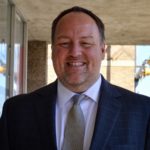 Craig Nash has lived in Waco since 2000. Since then he has worked at Baylor, been a seminary student, managed a hotel restaurant, been the “Barnes and Noble guy,” pastored a church and once again works for Baylor through the Texas Hunger Initiative. He lives with his dog Jane, religiously re-watches the same 4 series on Netflix over and over again, and considers himself an amateur country music historian.
Craig Nash has lived in Waco since 2000. Since then he has worked at Baylor, been a seminary student, managed a hotel restaurant, been the “Barnes and Noble guy,” pastored a church and once again works for Baylor through the Texas Hunger Initiative. He lives with his dog Jane, religiously re-watches the same 4 series on Netflix over and over again, and considers himself an amateur country music historian.
The Act Locally Waco blog publishes posts with a connection to these aspirations for Waco. If you are interested in writing for the Act Locally Waco Blog, please email [email protected] for more information.
(For the other parts of this series, click here: Gardening Waco. — ALW)
By Aime Sommerfeld-Lillard
Let’s talk about gardens. I’ve had a lot of conversations about gardens lately. Backyard gardens, producing gardens, school gardens or community gardens… all kinds of gardens.
Hold on to your seats for this part. Imagine: to some people a garden isn’t food or rows of vegetables!
That realization was a bit hard for me to swallow. I’ll never forget walking along the Texas A&M campus one day with my niece Grace when she said, “Oh, look at that garden!” I saw a 4×4 planting of stoic pansies marching in obedient lines in the middle of a sea of concrete, but she saw a garden. Life changing realization from a 6-year-old! I grew up harvesting vegetables from the garden with my Nonna and taking them to the house for lunch. Grace grew up watching her mom work with roses when her mom had time to spare. To me gardens were (still mostly are) food, and roses are a lot of work for something you can’t even eat. But this experience did make me realize that I was missing a large piece of what it meant to “be a gardener.”
As a researcher studying gardeners, this led me to stretch my thinking. I was curious what it meant to different individuals to be a gardener, or even what images came to mind when someone heard the word “garden.” Were they the same for similar age groups? Did rural vs urban make a difference? This led me down the rabbit hole of attempting a qualitative study looking at reasons people may garden at different stages of their lives. Somewhere along the way that project morphed into hearing stories of some lifelong gardeners and the role gardening played in their lives.
As fascinating as this was (and I sincerely hope I still have those transcripts), it was difficult research to craft a thesis around. So, I moved on to a different study that found adults over the age of 50 who reported themselves to be gardeners, also reported statistically higher quality of life measures. As a researcher this is great!
As I looked closely at the data, there were some interesting trends. Shockingly (to me), once again, these self-selected gardeners were not saying they grew food to eat. Several did grow herbs, but occasionally I would see that a “gardener” simply engaged in what I would call “yard work.” What this highlighted to me is that what a person considers to be “gardening” is highly dependent upon a person’s state of mind or personal perception.
Without looking back at original data from these studies, what I mostly remember is a question asking about earliest memories of a garden. Responses were very family centered, “I was with my mom…”; “I used to help my grandpa…”; “We would always…” The first garden memory was typically a social interaction in the garden, typically a positive memory, there was often learning involved, pride, and there were always details.
I’ve been working with the Carver Neighborhood Family Garden recently. I just love the name they’ve chosen because I feel like it appropriately describes their goal as a garden. A family or group of families is gardening for the neighborhood with the intent to share what they grow with those around them. This group is creating an opportunity for others based on their knowledge, skills, and belief that something like gardening is important. Important enough to spend their own time, funds, and energy to provide a demonstration for others.
Gardening can be a state of mind. It doesn’t really matter what you are producing or the process you are using to achieve your goals. It is most important to have goals, believe in them, share your stories, and – every once in a while – get your hands a little dirty. Assuming the quote is properly attributed I think there is a profound wisdom and a lesson for all in Audrey Hepburn’s statement, “To plant a garden is to believe in tomorrow.”
Take a moment. Think back and recall some of your earliest memories. Think of some of your fondest memories. Take note of how nature plays a part in the details or the setting of some of your fondest memories.
If you recall natural settings or gardens as some of your fondest memories, compare the nature surrounding you at that time with what is available today. Available to ourselves, but also to our children, our parents, our grandparents. How do we as a society provide these important interactions, lessons, and opportunities for growth with those around us and those who depend on us to teach them?
 Dr. Aime Sommerfeld Lillard has cultivated a love for nature and gardening through multiple outlets. Dr. Lillard is a Texas A&M graduate with a B.S. in Agricultural Leadership and Development and an M.S. and Ph.D. in Horticulture with a focus on human issues in horticulture. Currently, Dr. Lillard contracts with the Urban Gardening Coalition (UGC) for the Waco Health District’s Farmers Market Promotion Program Grant. She works in the Waco area through the vision of UGC to “strengthen local food production, improve access to healthy food, and empower folks to “grow their own” by creating a coalition that can impact a variety of horticultural education and grow through strategic partnerships.
Dr. Aime Sommerfeld Lillard has cultivated a love for nature and gardening through multiple outlets. Dr. Lillard is a Texas A&M graduate with a B.S. in Agricultural Leadership and Development and an M.S. and Ph.D. in Horticulture with a focus on human issues in horticulture. Currently, Dr. Lillard contracts with the Urban Gardening Coalition (UGC) for the Waco Health District’s Farmers Market Promotion Program Grant. She works in the Waco area through the vision of UGC to “strengthen local food production, improve access to healthy food, and empower folks to “grow their own” by creating a coalition that can impact a variety of horticultural education and grow through strategic partnerships.
(During these last few weeks of December we will be reprising the Top 10 Most Opened Blog Posts for 2018 from the Act Locally Waco blog. I couldn’t possibly pick my favorites – so I used the simple (cop out?) approach of pulling up the 10 blog posts that got the most “opens” according to our Google Analytics. It is an intriguing collection that gives at least a little insight into the interests and concerns of Act Locally Waco readers. I hope this “Top 10” idea inspires you to go back and re-read your personal favorites. There have been so many terrific ones… If you would like to see the Top 10 according to Google Analytics, here’s the link: Top 10 Most Opened Blog Posts of 2018. Merry Christmas! — ABT)
By Caroline Thornton
After graduating from Baylor in 2016, I decided to make Waco my home. I sensed an entrepreneurial movement growing in Waco. I began to see many of my friends – young professionals – were choosing to stay in town. They were staying not just for grad school, but because they saw what this town offered and they saw opportunities to give to the city through their personal and professional lives. This excited every fiber within me! I had always seen what Waco has to offer when you dive head first into involvement in the city.
I decided to join the movement by starting my own business. I started a company called “Second Me.” We offered services to help people do their “to do” lists. I hired college students to work for me and began managing lots of schedules! As it grew I saw the potential it had to become something big. The bigger it got the more I was confident I did not want to be the one to drive it to become a national business. After two years of my company, I felt at peace to find the next thing in my career.
When I decided to put my business to rest, little did I know I would get to be an integral part of making co-working space in Waco a reality.
A little over a year ago I heard a podcast from the founders of a national co-working space company called, WeWork. I immediately felt this concept could be a part of taking the entrepreneur movement in Waco to the next level.
Since graduating I had noticed groups of creative, entrepreneurial people who were enthusiastic about all things Waco. I started immersing myself in several of them. I also noticed that these groups of people didn’t really have a place to call “home” for work. Many are freelancers, have start-up businesses, or work remotely. Being a business owner myself, I noticed how we were all working all over town at different places, but no place existed that allowed us to truly root ourselves and our work.
After making my decision to leave Second Me, I took on a babysitting job and discovered that the dad of the kids I was watching and his business partners were developers in the city. I began talking about our need for a co-working space. I shared articles, podcasts, books, and statistics of what co-working is and why we need it. They agreed. We needed that kind of space in Waco. Coincidentally they, Duelge Holdings, had just purchased their second building downtown on Columbus and 6th street (the first being Mary Avenue Market). They asked me if I would help develop the idea and educate the community on the concept of “co-working,” and then help run the space once it was open.
I eagerly said, “YES!” And, with that, started the most fun part, so far, of my professional journey.
What exactly is “co-working?”
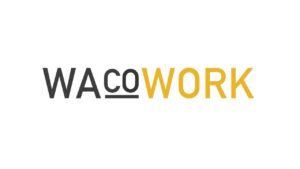 By 2020, 40% of the workforce will be freelancers, independent contractors, and solopreneurs. Collaboration and sharing are growing all around us, partly due to the possibilities created by new technologies and partly due to changes in the current work and corporate structures. Companies are getting smaller, but at the same time more productive and competitive. People are making their work places more collaborative within their companies, and are also breaking the borders by joining other companies. All this is an effort not only to reduce expenses, but to create a more dynamic, creative, and happy workplaces. This is the heart of co-working – to share expenses, but also to be a part of a community that networks and collaborates so everyone benefits from it.
By 2020, 40% of the workforce will be freelancers, independent contractors, and solopreneurs. Collaboration and sharing are growing all around us, partly due to the possibilities created by new technologies and partly due to changes in the current work and corporate structures. Companies are getting smaller, but at the same time more productive and competitive. People are making their work places more collaborative within their companies, and are also breaking the borders by joining other companies. All this is an effort not only to reduce expenses, but to create a more dynamic, creative, and happy workplaces. This is the heart of co-working – to share expenses, but also to be a part of a community that networks and collaborates so everyone benefits from it.
Is this a trend? Will it pass? I don’t think so. Co-working responds to a deep need. The structures of work in our society are changing and with them the needs of workers, namely freelancers and entrepreneurs. Co-working responds to these fundamental changes and will keep growing in cities around the globe – and here in Waco.
Our team has been dreaming together about how to make our space, WACOWORK, the best possible space for helping the entrepreneurial spirit take root in Waco. To us at WACOWORK, it’s creating a collaborative work environment for startups, freelancers, small companies, and remote employees to share resources and ideas as one working community. Our vision for WACOWORK is to see connections, relationships, and opportunities form through our space. We aim for the community within WACOWORK to be dynamic and innovative, exemplifying the power that happens when professionals with all different kinds of businesses work alongside one another. The aesthetics of the WACOWORK space reflects the connectivity, creativity, and productivity we hope to stimulate — its a bit quirky to help make every day at the office a memorable one.
WACOWORK is going to be a place for taking big risks and doing things that are a little off-kilter. We aim to house members that are bold, innovative, and welcoming. Waco is a city ripe with opportunity, and I cannot wait to unearth all of the exciting things to come through Waco’s first coworking space, WACOWORK.
If this sounds like something you think would work well for your entrepreneurial venture, feel free to contact me at 254.304.9368. Hit me up, let’s get coffee, I want to meet you!
 After graduation from Baylor in 2012, Caroline Thornton decided to stay in Waco. Seeing the opportunity for some creative endeavors, she first opened “Second Me” a company that aimed to do peoples’ to do lists – from running errands to tasks around the house. Here next venture it to help manage the “WacoWork” coworking space at 600 Columbus Avenue Suite 106. She encourages everyone she meets to take a chance – be a creator in Waco, not just a consumer!
After graduation from Baylor in 2012, Caroline Thornton decided to stay in Waco. Seeing the opportunity for some creative endeavors, she first opened “Second Me” a company that aimed to do peoples’ to do lists – from running errands to tasks around the house. Here next venture it to help manage the “WacoWork” coworking space at 600 Columbus Avenue Suite 106. She encourages everyone she meets to take a chance – be a creator in Waco, not just a consumer!
